Your human rights

Human rights are the rights we all have as human beings.
Human rights mean you should be treated fairly, with dignity and respect.
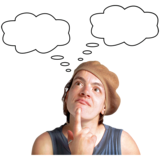
You should be able to make choices about your life and be able to do things that are important to you.

Although some rights can be limited or restricted, your rights cannot be taken away from you.
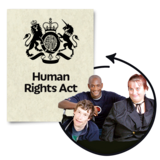
In the UK, the Human Rights Act 1998 puts 16 human rights into law.
This law means public bodies must respect and protect your human rights.

Public bodies are organisations like the government, local councils, the NHS and the police.

These are the 16 human rights
- Right to life
- Right to be safe from serious harm
- Right to be free from slavery and forced work
- Right to liberty
- Right to a fair trial
- Right not to be punished for something that wasn't against the law when you did it
- Right to respect for private and family life
- Right to freedom of thought, belief and religion
- Right to freedom of expression
- Right to get together and join groups
- Right to marry and start a family
- Right not to be discriminated against
- Right to enjoy things that belong to you
- Right to education
- Right to free elections
- Banning the death penalty
You can find out more about all 16 human rights on the British Institute of Human Rights website at What rights do I have?

These 5 rights are some of the most important human rights.
It is good to know a bit more about them.
- The right to life
- The right to be safe from serious harm
- The right to liberty
- The right to respect for private and family life
- The right not to be discriminated against
The right to life (Article 2)
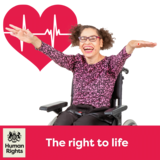
The right to life means doctors, nurses, social workers and other people working for public bodies cannot deliberately take away your life.

Public bodies must protect your life when we know (or should know) that your life is at risk.
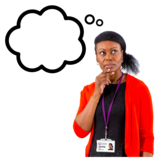
If a public body is involved in someone’s death, or fails to protect life, there must be an official investigation into what happened.

For example, your right to life could be at risk if:
- a doctor refuses to give you life-saving treatment because of your age or disability
- you are discharged from hospital with no care or support in place to meet your needs, meaning your life is at risk
- you have a ‘do not resuscitate’ order placed on your file without consent from you or someone advocating for you.
The right to be safe from serious harm (Article 3)
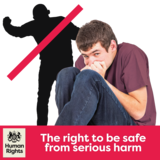
The right to be free from serious harm means that no one working for a public body should make you feel scared, or put you down, or cause you a lot of pain.

Public bodies must not put you at risk of serious harm and must protect you when we know (or should know) you are at risk of serious harm.

There must be an official investigation if a public body is involved in putting you at risk of serious harm or treating you in a way which causes serious harm.

For example, your right to be free from serious harm could be at risk if:
- you are abused in a care home
- you are left in dirty clothes for a long time
- you don’t get the support you need to eat or drink.
The right to liberty (Article 5)
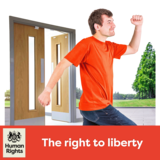
The right to liberty protects you from limits being placed on your freedom.

Public bodies must go through a test if we want to restrict your right to liberty.
We have to prove that what we want to do is legal, we have good reason, and our action is the least restrictive option.

For example, your right to liberty could be at risk if:
- you are restrained for a long time
- you are arrested and you don’t understand why
- you are stopped from leaving somewhere (like a care home or hospital), unless the law says you can be stopped.
- you lack capacity to agree to move to a care home, unless the Deprivation of Liberty Safeguards procedure has been followed.

People lack capacity if they are not able to make a decision about their lives at the time when the decision needs to be made.
Decision making and your rights
Deprivation of Liberty Safeguards protect people who lack capacity. The Safeguards make sure people are treated in the right way.
The right to respect for private and family life (Article 8)
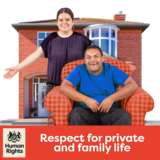
The right to respect for private and family life protects your privacy, relationships and communication

Public bodies must go through a test if we want to restrict your right to private and family life.
We have to prove that what we want to do is legal, we have good reason, and our action is the least restrictive option
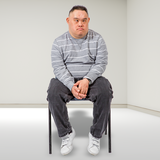
For example, your right to respect for private and family life could be at risk if:
- you are not involved in choices and decisions about your life, including your care or treatment
- contact with your family or friends is restricted or stopped
- a worker shares personal information with you without asking you if that is ok.
The right to be treated fairly (Article 14)

The right to be treated fairly protects you from discrimination.
Discrimination means treating people differently or badly because of things like age, race or disability.

This right means everyone should be treated fairly. It means people have equal rights.
This right also protects you if public bodies do not treat you differently when you are in a different situation to other people.

This right has to be joined on to another one of your human rights, like your right to life or your right to liberty.

For example, your right to be treated fairly could be at risk if:
- a social worker decides you should live in a care home just because of your age
- you are refused medical treatment because you have a learning disability
- you are bullied by a care worker because you are gay.
Images provided by Photosymbols
